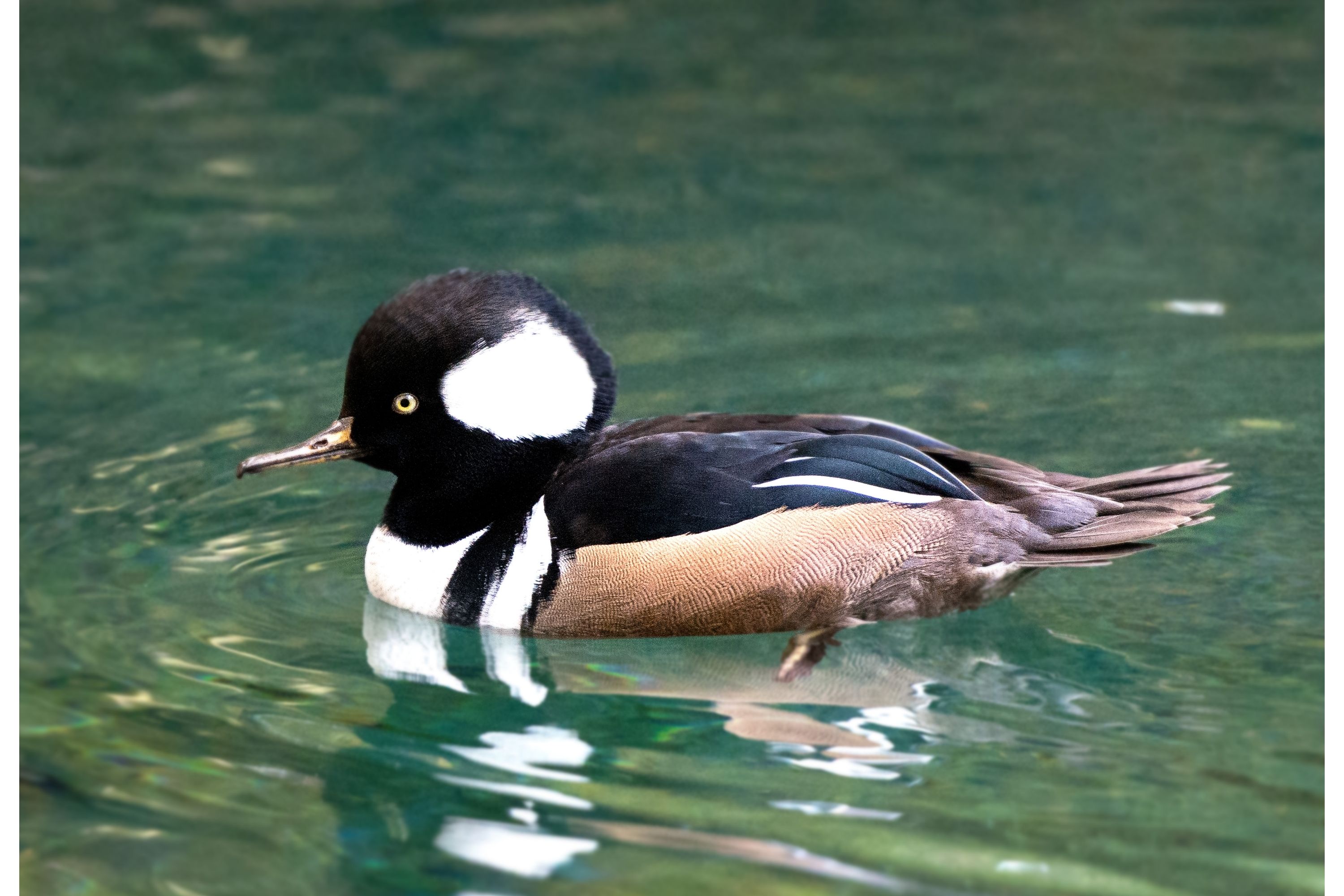Hooded merganser
(Lophodytes cucullatus)

Description
The hooded merganser (Lophodytes cucullatus) is a species of merganser. It is the only extant species in the genus Lophodytes. The genus name derives from the Greek language: lophos meaning 'crest', and dutes meaning 'diver'. The bird is striking in appearance; both sexes have crests that they can raise or lower, and the breeding plumage of the male is handsomely patterned and coloured. The hooded merganser has a sawbill but is not classified as a typical merganser. Hooded mergansers are the second smallest species of merganser, with only the smew of Europe and Asia being smaller, and it also is the only merganser whose native habitat is restricted to North America. A species of fossil merganser from the Late Pleistocene of Vero Beach, Florida, was described as Querquedula floridana (a genus now included in Anas), but upon reexamination turned out to be a species closely related to the hooded merganser; it is now named Lophodytes floridanus, but the exact relationship between this bird and the modern species is unknown. Measurements: Length: 15.8-19.3 in (40-49 cm) Weight: 16.0-31.0 oz (453-879 g) Wingspan: 23.6-26.0 in (60-66 cm) Hooded mergansers are short-distance migrants, and they winter in the United States in regions where winter temperatures allow for ice-free conditions on ponds, lakes and rivers. They have two major year-round ranges. One is in the eastern United States from the southern Canada–US border along the Atlantic Coast to the Gulf Coast in the region of the Mississippi delta. A smaller year-round range extends from Washington state and southern British Columbia to northern Idaho. They also breed to some extent in regions from Missouri to southern Canada and from Nova Scotia to eastern North Dakota and Saskatchewan, migrating when necessary to avoid winter conditions. From 1966 - 2015, the hooded merganser experienced a >1.5% yearly population increase throughout its breeding range. For preference the hooded merganser lives on small bodies of water such as ponds and small estuaries where there is ample emergent aquatic vegetation, but it also inhabits larger wetlands, impoundments, flooded timber, and rivers. They prefer fresh water but do occur on brackish water bodies as well.
Taxonomic tree:







